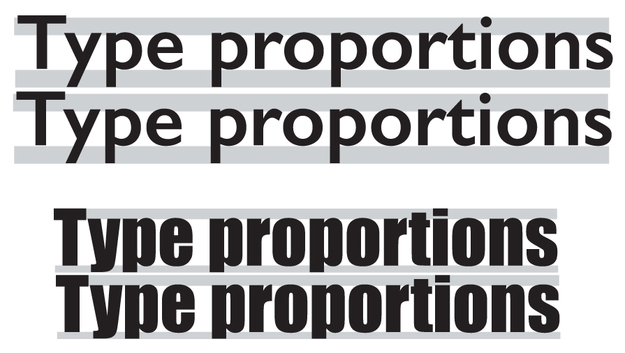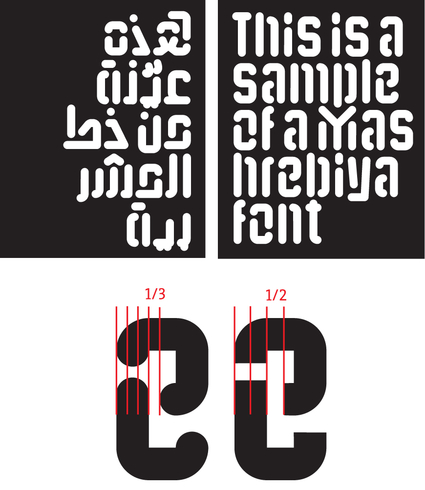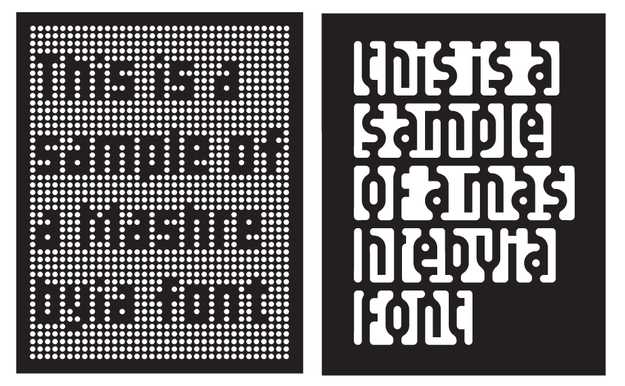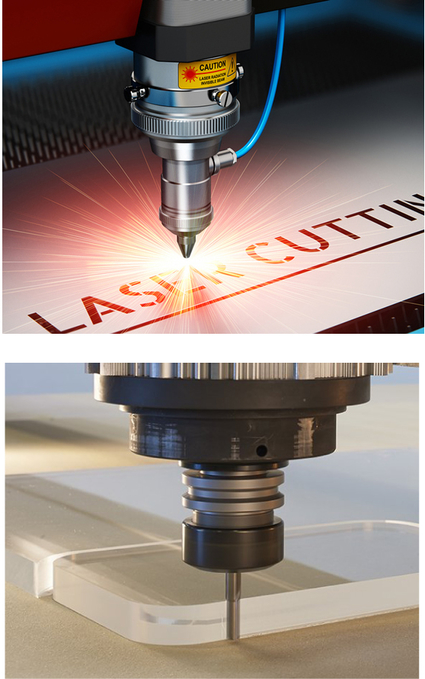Event:
The Mashrebiya Font Competition
Call For Submission: Fonts for modern architectural screens.
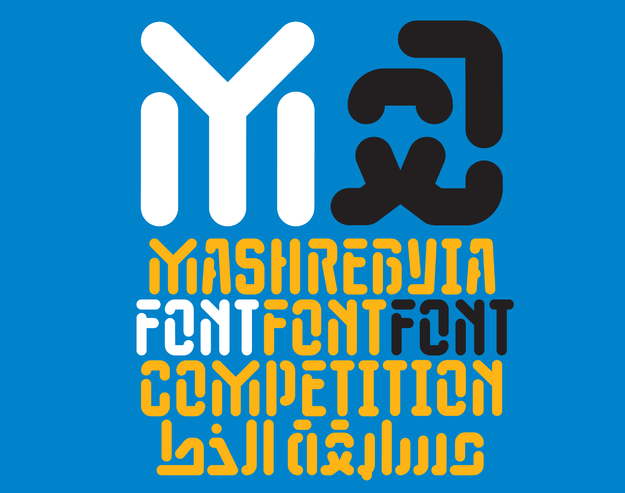
The Mashrebiya screen is an iconic element of Arab/Islamic architecture. Mashrebiyas are still popular as separation screens or walls, however they are often constructed from complex geometrical parts and shapes, and rarely using only letters. There are no fonts around that are specially designed for producing this kind of translucent screens.
———
The Competition
The Mashrebiya competition will take place in two phases:
Phase I.
In phase one the jury will make a selection for a shortlist from sketches for a proposed Mashrebiya font. The selected designers will then be invited to produce a functional font file in OTF format that incorporates all the basic character set for Arabic, Farsi (and basic Latin).
Phase II.
The jury will select from the submitted fonts (complete font files) a maximum of 4 typefaces to be awarded a prize of €1000 each. The jury has no obligation to award design admissions. The jury can decide to award as many of the maximum of four awards available as they see fit. Awards have to be top level quality type designs.
———
Awards
Each award winner will be paid € 1000,- plus an 3D award produced in their own winning font design. In return, the prize winners will give a free license for the winning fonts to use by the Khatt Foundation and its directly related organizations.
All participants in the competition will allow Khatt Foundation and Khatt Books to publish their submissions for free in any medium and in perpetuity. All font designs remain the sole property of their respective designers.
———
Who can participate
The competition is open to all members of the Khatt Foundation online community, those interested that are not members can sign up for free as new members on this website.
The submission can be made by one individual designer or can be a collaboration between 2-3 designers. Each designer or design team can submit more than one design sketch.
A good command of design software for creating clean outlines, and later font design software is important.
The design may be for Arabic or Latin, but dual-script (Arabic & Latin) typeface design will be an added value.
———
Submission Guidelines
The design sketches need to be submitted in PDF format by email to the khatt foundation email address: khatt[dot]foundation[at]gmail[dot]com. The PDF should have the name of the font, and the name of the designer, showing a text of your choice in black over a white background and in white over a black background. Additionally you can submit an image that simulates how it will look in reality as a Mashrebiya.
———
Deadlines:
Phase I: Submission will close on the 31st of July 2017.
The shortlist will be announced on 21st of August 2017.
Phase II: Submission of the OTF font files will close on the 31st of October 2017
The winners and awards will be announced on 30th November 2017
The competition shortlisted and awarded designs will be published along with the jury report and will be showcased
on the Khatt Foundation website.
———
Jury
—Yara Khoury Nammour, Graphic and Type Designer, Al Mohtaraf design studio.
—Pascal Zoghbi, Type Designer, 29LT Font foundry.
—Edo Smitshuijzen, Inpedendent Graphic and Product Designer.
———
Design Brief and technical considerations
1. The font is meant to be used merely for product and architectural applications.
2. The real design challenge of this font competition is to design a font that reduces the regular white space around text dramatically. A font can only become a Mashrebiya font when the font is extremely compact. In a Mashrebiya screen the transparency is around 50% which means that about half the material (the background) of a panel is cut away. In ‘normal’ typography the letters cover no more that 10–20% of the background. The first thing we can do is to give as little space as possible for the ascenders and the descenders. Thus making the x-height (or loop/tooth) height as large as possible.
The leading can be further reduced by creating ‘stylistic’ variations of all letters with descenders. The stylistic variation of all these letters will fit into the x-height. The stylistic variation will be used in all cases were an ascender and a descender collide.
3. There are basically two ways to create a Mashrebiya font: first, a 'regular' stencil font that can be cut out of panel material, and second a 'unusual' font that cuts away the spaces around the letter shapes. Underneath is a sample of a Mashrebiya stencil font. In order to avoid weak end-results, the space between letter-parts may not be smaller than 1/3 of the stroke width (with round stroke endings) and 1/2 of the stroke width (with square stroke endings).
Underneath are two samples of ‘unusual’ Mashrebiya fonts. Left, is a font design based on a perforated grid were the letters become visible by leaving parts of the perforations out. On the right is a font design that cuts away all the spaces around the letters but at the same time creating a frame that hold all the letters together.
4. There are two production methods for producing Mashrebiya (font) screens: with a laser cutter or with a CNC router. The difference between the two is first the radius of the cutting tool and second the production costs. A laser cutter will work with a diameter of around 1 mm, which makes it effectively possible to use all sorts of font outlines. Straight angles will be rounded off a bit. The CNC router requires a special font design, because the cutting tool will have a diameter of 4–12 mm. However, CNC routing is cheaper in large sizes and can cut natural material without burning marks.
For information and questions please address your emails to khatt[dot]foundation[at]gmail[dot]com
